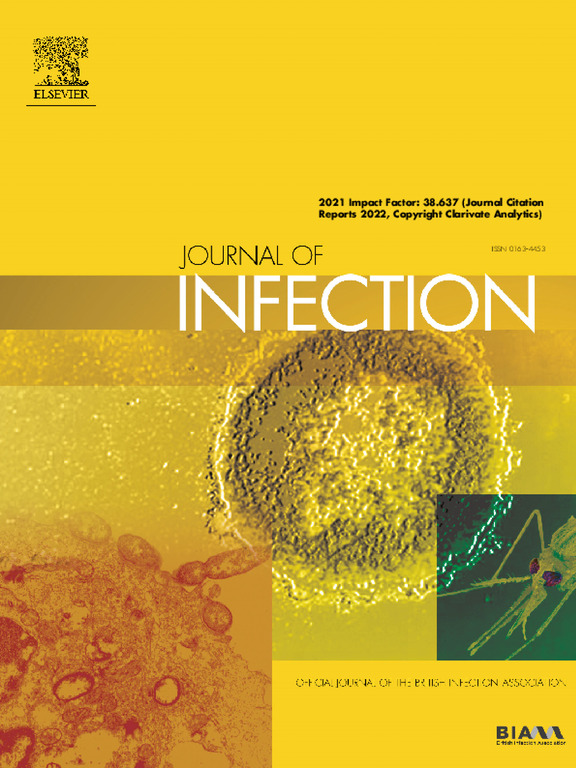基于阻抗的尿路感染肠杆菌快速药敏试验
IF 11.9
1区 医学
Q1 INFECTIOUS DISEASES
引用次数: 0
摘要
目的:基于证据的尿路感染(uti)抗生素处方将提高治疗成功率并改善抗生素管理。目前的抗菌素敏感性试验(AST)非常耗时。一种新的基于表型阻抗的Fast AST (iFAST)测量了单个细菌对抗生素暴露的电表型变化。研究了该技术对尿路感染病原菌的适用性。方法:58株大肠埃希菌和肺炎克雷伯菌暴露于EUCAST的尿路感染抗生素断点浓度。暴露两小时后,比较与未暴露对照人群相比的细胞计数百分比,并推断易感性。结果与金标准肉汤微量稀释(BMD) AST结果进行比较。临床评估敏感性阈值。最小抑制浓度(MIC)为或高于断点的一倍稀释的菌株-抗生素组合暴露于抗生素的两倍稀释中,并在iFAST上测量以确定电MIC。结果:在5小时的测试中,考虑到BMD MIC测量固有的2倍变异性,所有8种抗生素对实验室菌株的相关性均为100%。临床评价显示80项试验中至少74项符合。电mic与经典mic具有广泛的等效性。结论:iFAST有潜力作为一种准确、快速的尿路感染肠杆菌检测方法。本文章由计算机程序翻译,如有差异,请以英文原文为准。
Rapid impedance-based Antimicrobial Susceptibility Testing (iFAST) of Enterobacterales in urinary tract infections
Objectives
Evidence-based antibiotic prescribing for urinary tract infections (UTIs) would increase treatment success and improve antibiotic stewardship. Current antimicrobial susceptibility tests (AST) are time-consuming. A novel phenotypic impedance-based Fast AST (iFAST) measures changes in the electrical phenotype of single bacteria in response to antibiotic exposure. Suitability of this technology for UTI causing bacteria was investigated.
Methods
Fifty-eight strains of Escherichia coli and Klebsiella pneumoniae were exposed to EUCAST breakpoint concentrations of UTI antibiotics. Following a two-hour exposure, the % cell count compared to unexposed control populations were compared and susceptibility deduced. Results were compared to gold standard broth microdilution (BMD) AST results. Susceptibility thresholds were clinically evaluated. Strain-antibiotic combinations with a minimum inhibitory concentration (MIC) on or one doubling dilution above the breakpoint were exposed to doubling dilutions of antibiotics and measured on iFAST to determine an electrical MIC.
Results
100% correlation was obtained for all eight antibiotics against laboratory strains, when allowing for the inherent 2-fold variability of the BMD MIC measurement, within a five-hour test. Clinical evaluation showed concordance in at least 74 out of 80 tests. Electrical MICs showed broad equivalence with classical MICs.
Conclusions
iFAST has potential as an accurate and rapid AST for UTI causing Enterobacterales.
求助全文
通过发布文献求助,成功后即可免费获取论文全文。
去求助
来源期刊

Journal of Infection
医学-传染病学
CiteScore
45.90
自引率
3.20%
发文量
475
审稿时长
16 days
期刊介绍:
The Journal of Infection publishes original papers on all aspects of infection - clinical, microbiological and epidemiological. The Journal seeks to bring together knowledge from all specialties involved in infection research and clinical practice, and present the best work in the ever-changing field of infection.
Each issue brings you Editorials that describe current or controversial topics of interest, high quality Reviews to keep you in touch with the latest developments in specific fields of interest, an Epidemiology section reporting studies in the hospital and the general community, and a lively correspondence section.
 求助内容:
求助内容: 应助结果提醒方式:
应助结果提醒方式:


